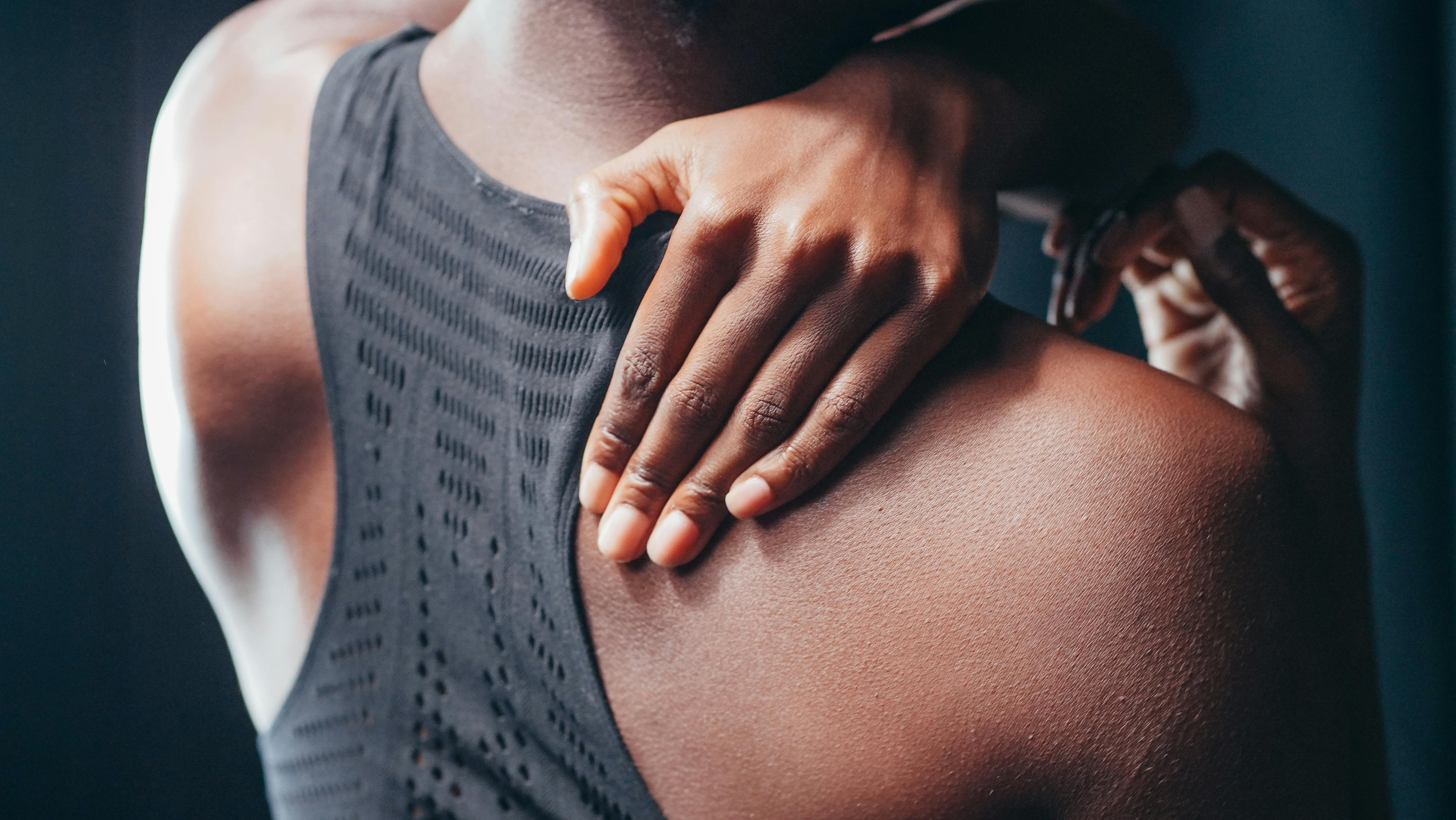Essential Guide to Effective Exercises for Your Side Shoulder in 2025
As we delve into the significance of seitliche Schulterübungen (side shoulder exercises) for overall shoulder health, it’s essential to understand that this region plays a crucial role in various physical activities and daily functions. Strengthening and maintaining optimal seitliche Schulterbeweglichkeit (shoulder mobility) can prevent injuries and enhance performance, particularly in sports and fitness routines. This guide aims to provide an overview of effective exercises, focusing on seitliche Schulterkräftigung (shoulder strengthening), injury prevention, and rehabilitation techniques.
Understanding the anatomy of the seitliche Schultermuskeln (side shoulder muscles) is vital for any fitness enthusiast or rehabilitating athlete. Throughout this guide, we will highlight the importance of targeting these specific muscle groups through various training strategies. We’ll also discuss conditions like seitliche Schulterschmerzen (side shoulder pain) and ways to alleviate discomfort through effective seitliche Schultertherapie (shoulder therapy).

Here’s what you can expect in this guide:
- An overview of the seitliche Schulteranatomie (shoulder anatomy)
- Key exercises for seitliche Schulterkräftigung and stabilization
- Strategies for prevention and rehabilitation of side shoulder injuries
- Insights into improving shoulder mobility and strength
- Practical tips for effective training and recovery
By the end of this article, you should have a comprehensive understanding of how to effectively care for your shoulders through targeted exercises, fostering both health and performance.
Understanding Your Side Shoulder Anatomy
Building a solid foundation involves understanding the seitliche Schulteranatomie (shoulder anatomy) and how the various muscles interact during movement. The shoulder is a complex joint comprised of several key muscles, tendons, and ligaments. Among these, the deltoid, rotator cuff, and trapezius are the primary players in lateral shoulder function.
Key Muscles Involved in Side Shoulder Strengthening
The main goal of since shoulder exercises is to target the muscle groups that contribute to shoulder stability and mobility. The deltoid muscle, particularly its lateral portion, is crucial when performing any seitliche Schulterrotation (shoulder rotation) exercises. Additionally, the rotator cuff—which includes muscles like the supraspinatus, infraspinatus, teres minor, and subscapularis—plays a fundamental role in shoulder stabilization. Strengthening these muscles will not only enhance performance but also prevent injuries associated with poor shoulder function.
Common Side Shoulder Injuries
Many people experience seitliche Schulterverletzungen (side shoulder injuries), often stemming from overuse or improper technique during exercise. Common injuries include rotator cuff tears, impingement syndrome, and tendonitis. Understanding these conditions is essential in establishing effective seitliche Schultertherapie (shoulder therapy) and rehabilitation plans. Recognizing early symptoms of injury can significantly alter the recovery process and reduce long-term damage.
Importance of Shoulder Mobility
Optimal seitliche Schulterbeweglichkeit enhances performance across various activities, from lifting weights to participating in sports. Engaging in specific stretching and mobility exercises can significantly improve your range of motion, ensuring that you maintain functional movement patterns. Additionally, improved mobility can help you recognize any restrictions that may predispose you to injuries.
Effective Exercises for Side Shoulder Strengthening
Now that we’ve established the importance of understanding your shoulder anatomy, let’s dive into specific exercises designed for seitliche Schulterkräftigung (shoulder strengthening). These exercises focus on enhancing muscle function, increasing stability, and improving mobility.
Top 5 Lateral Shoulder Exercises
1. **Lateral Raises** – This classic exercise primarily targets the lateral deltoid, providing an excellent way to build shoulder strength. Stand upright with dumbbells in each hand, raise your arms to the side until they reach shoulder height, and slowly lower them. Aim for 3 sets of 12-15 reps.
2. **Shoulder Press** – Utilize a pair of seitliche Schulterfreihanteln (dumbbells) or a barbell for this movement. Starting at shoulder height, press the weight overhead while keeping your core engaged. This exercise strengthens the entire shoulder region.
3. **Face Pulls** – Engage your rear deltoids and rotator cuff by using a resistance band or cable pulley. Pull the band towards your face while keeping your elbows high and squeezing your shoulder blades together.
4. **External Rotations** – This exercise focuses on strengthening the rotator cuff muscles. With a resistance band attached at elbow height, keep your elbow at your side while rotating your forearm outward. Perform 3 sets of 12-15 reps.
5. **Y-T-W Raises** – This compound exercise targets multiple shoulder muscles. Lie face down on an incline bench and raise your arms in three positions: “Y”, “T”, and “W” shapes, focusing on squeezing your shoulder blades together as you lift.

Strategies for Rehabilitation and Injury Prevention
Proper rehabilitation and injury prevention techniques are crucial for maintaining shoulder health. Many individuals, especially athletes, can benefit from a structured rehabilitation approach following an injury. This section outlines effective methods for seitliche Schulterregenerierung (shoulder recovery) and strategies to enhance shoulder fitness.
Rehabilitation Techniques
Following a shoulder injury, focusing on gentle mobility and gradual strength building is essential. Engage in physiotherapeutic exercises to restore mobility and prevent stiffness. Incorporating light resistance bands can aid in achieving optimal functional recovery through seitliche Schultertherapie (shoulder therapy).
Incorporating Mobility Work
Regular mobility work is key for maintaining seitliche Schulterbeweglichkeit (shoulder mobility). Focus on dynamic stretching before workouts and static stretching post-exercise to promote flexibility and reduce the risk of injuries. Key stretches include cross-body shoulder stretch and doorway chest stretch to enhance your shoulder’s range of motion.
Strength and Conditioning Programs
A balanced strength training program should include exercises that develop not only the shoulder muscles but also the surrounding musculature, such as the upper back and core. This ensures optimal stability and support for the shoulder joint, reducing the risk of seitliche Schulterverletzungen (side shoulder injuries).
Improving Side Shoulder Stability
Enhanced stability is critical for effective shoulder function, especially during high-intensity activities or weight training. Here, we focus on strategies for developing optimal seitliche Schulterstabilität (shoulder stability).
Core Engaging Exercises
Integrating core strengthening exercises helps maintain shoulder stability. Engaging the core during shoulder exercises prevents excessive movement at the shoulder, enhancing overall control. Planks, dead bugs, and Russian twists are excellent complementary exercises.
Circuit Training for Endurance and Stability
Incorporating high-repetition, low-resistance circuit training can build endurance for the shoulder muscles. This training method can involve a combination of shoulder presses, lateral raises, and resistance band exercises, focusing on maintaining stability throughout various movements.
Conclusion: Taking Care of Your Side Shoulders
In summary, understanding and implementing effective seitliche Schulterübungen (side shoulder exercises) opens the door to improved shoulder health and performance. By recognizing the structure, engaging in targeted strengthening techniques, and emphasizing rehabilitation strategies, you can keep your shoulders strong and functional. Remember, consistency is key—make these exercises a staple in your routine to experience the benefits for years to come.
For further insights on shoulder health and related topics, explore our additional resources on shoulder rehabilitation techniques and tips for effective exercise programs.
